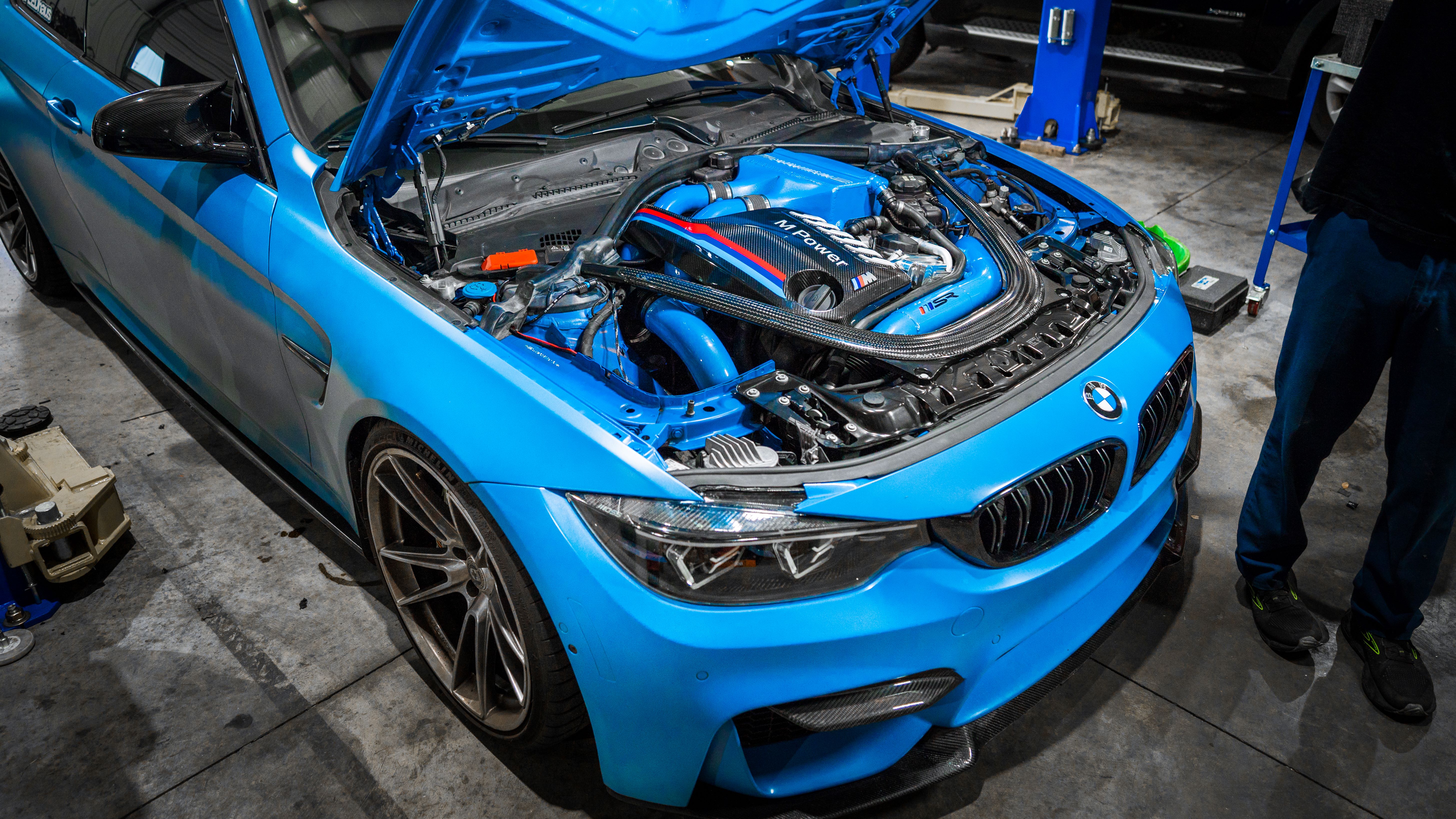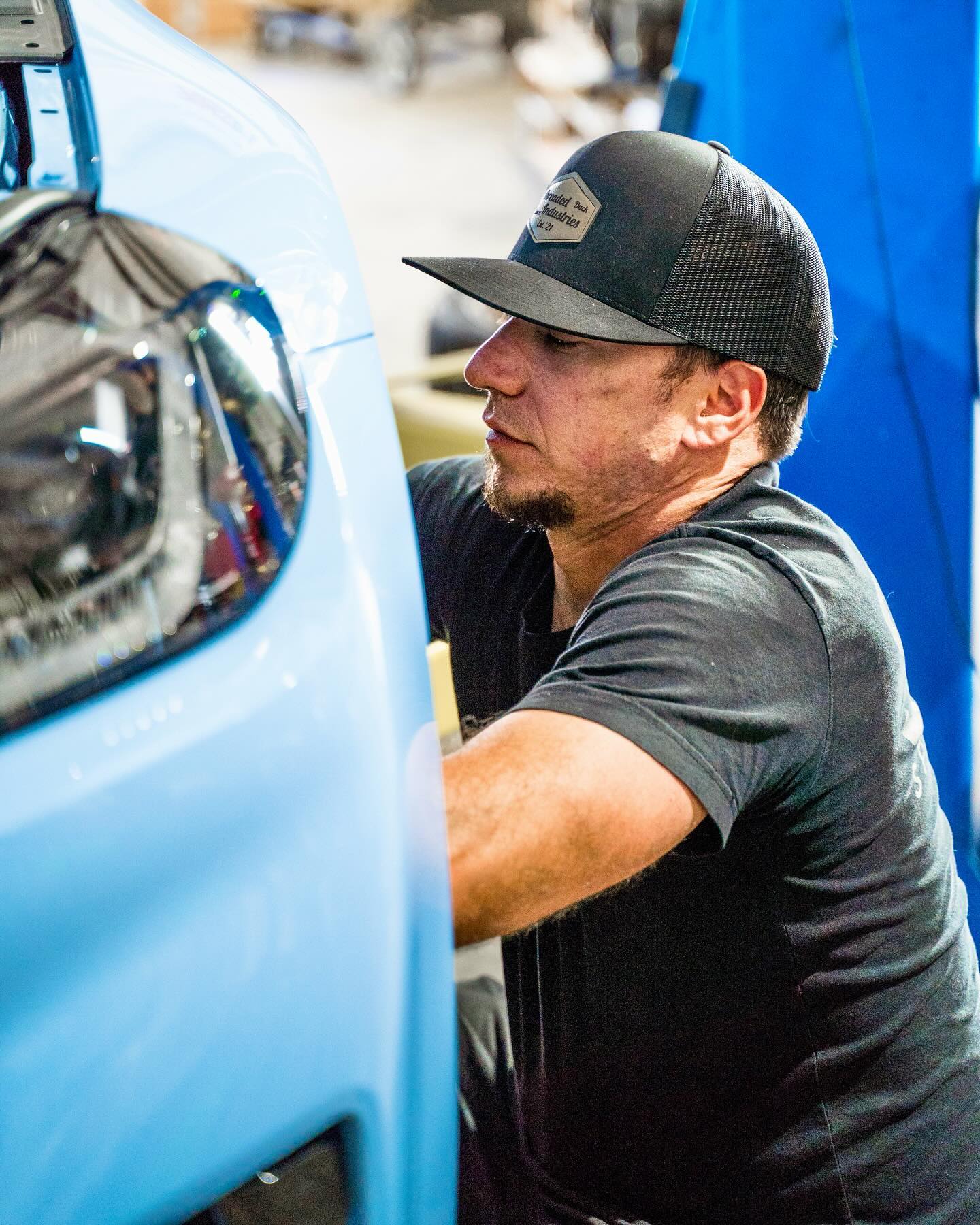
Horsepower vs. Torque: What's the Difference and Why It Matters
Walk into any car meet, browse automotive forums, or flip through performance magazines, and you'll inevitably encounter the age-old debate: horsepower versus torque. These two fundamental measurements of engine performance are often misunderstood, frequently confused, and sometimes treated as competing forces when they're actually complementary aspects of how your engine produces power.
Understanding the relationship between horsepower and torque isn't just automotive trivia—it's essential knowledge that affects everything from choosing the right vehicle for your needs to making informed decisions about performance modifications. Whether you're shopping for a daily driver, building a track car, or simply trying to understand what those dyno charts really mean, grasping these concepts will make you a more informed enthusiast and help you get the most out of your automotive investments.
The confusion surrounding horsepower and torque stems partly from how they're marketed and discussed in automotive circles. Manufacturers often emphasize whichever number sounds more impressive, while enthusiasts sometimes develop strong preferences for one over the other without fully understanding what each measurement represents. The reality is that both horsepower and torque tell important but different stories about your engine's capabilities and character.

Understanding Torque: The Foundation of Engine Power
Torque represents the twisting force your engine produces, measured in pound-feet (lb-ft) or Newton-meters (Nm). Think of torque as rotational strength—it's the force that actually turns your crankshaft and, ultimately, moves your vehicle forward. When you feel that satisfying push into your seat during acceleration, you're experiencing the effects of torque being transmitted through your drivetrain to the wheels.
The most intuitive way to understand torque is through the simple analogy of using a wrench. If you're trying to loosen a stubborn bolt, a longer wrench gives you more leverage and makes the job easier. Similarly, engines with longer stroke lengths (the distance the piston travels) typically produce more torque because they create more leverage on the crankshaft. This is why large displacement, long-stroke engines often feel so strong and effortless during acceleration.
Torque production varies significantly across an engine's RPM range, creating what's known as a torque curve. Most engines produce their peak torque somewhere in the middle of their operating range, typically between 2,000 and 4,000 RPM for naturally aspirated engines. This peak torque figure is what manufacturers advertise, but the shape of the entire torque curve tells a much more complete story about how an engine will feel to drive.
Diesel engines are famous for their high torque output, often producing significantly more torque than gasoline engines of similar displacement. This characteristic makes diesel engines feel incredibly strong for towing, hauling, and low-speed acceleration despite often producing less peak horsepower than their gasoline counterparts. The broad, flat torque curves typical of diesel engines mean they maintain strong pulling power across a wide RPM range.
Forced induction systems like turbochargers and superchargers can dramatically alter an engine's torque characteristics. Turbocharged engines often produce their peak torque at relatively low RPM, creating what enthusiasts call "boost surge"—a sudden rush of power that can make even small-displacement engines feel surprisingly strong. However, this torque production may fall off at higher RPM as the turbocharger becomes less efficient.
The transmission and final drive ratio in your vehicle multiply the engine's torque before it reaches the wheels. This is why first gear feels so strong for acceleration—the transmission is multiplying your engine's torque output by a significant factor. As you shift to higher gears, less torque multiplication occurs, but your wheels can turn faster, allowing for higher speeds.
Horsepower: The Complete Picture of Engine Performance
While torque represents force, horsepower measures the rate at which that force can be applied over time. Horsepower is actually calculated from torque and RPM using the formula: Horsepower = (Torque × RPM) ÷ 5,252. This mathematical relationship reveals why horsepower and torque curves always intersect at 5,252 RPM on any dyno chart—it's not a coincidence, but a mathematical certainty.
The concept of horsepower was originally developed by James Watt to help market his steam engines by comparing their output to the work horses could perform. One horsepower was defined as the ability to lift 550 pounds one foot in one second, or 33,000 pounds one foot in one minute. While we've moved far beyond steam engines, this fundamental definition of work performed over time remains the basis for measuring engine output.
Understanding horsepower requires thinking about both force and speed working together. An engine might produce tremendous torque, but if it can only sustain that torque at low RPM, it won't produce impressive horsepower numbers. Conversely, an engine might not produce huge torque figures, but if it can maintain decent torque output at very high RPM, it can generate substantial horsepower.
This is why high-performance engines often rev to extremely high RPM—they're trading torque for the ability to maintain power output at higher engine speeds. Formula 1 engines, for example, historically produced relatively modest torque figures but generated enormous horsepower by maintaining that torque output at RPM levels that would destroy conventional engines.
The horsepower curve tells you about an engine's overall power delivery characteristics and its ability to maintain performance as RPM increases. Engines with flat, broad horsepower curves tend to feel strong and responsive across a wide range of driving conditions, while engines with narrow, peaky horsepower curves may feel incredible at specific RPM ranges but less impressive elsewhere.
Peak horsepower typically occurs at higher RPM than peak torque because of the mathematical relationship between the two. As RPM increases beyond the peak torque point, torque output begins to decline, but the multiplication effect of higher RPM can continue to increase horsepower until the torque falls off too dramatically to sustain further horsepower gains.

How Horsepower and Torque Affect Real-World Driving
The horsepower versus torque debate becomes much clearer when you consider how each affects different aspects of vehicle performance and driving experience. Both measurements provide valuable information, but they influence different aspects of how a car feels and performs in various situations.
For low-speed acceleration and everyday driveability, torque characteristics play the dominant role in how strong and responsive an engine feels. High torque output at low RPM means the engine can accelerate the vehicle effectively without needing to rev high or downshift frequently. This is why diesel trucks feel so effortless when pulling heavy loads—their high torque output at low RPM provides the pulling power needed for these demanding applications.
Stop-and-go city driving heavily favors engines with strong low-end torque production. When you need to accelerate from traffic lights or merge into traffic, having substantial torque available at low RPM means the engine responds immediately without requiring downshifts or high RPM operation. This characteristic makes the driving experience feel more effortless and reduces the need for aggressive throttle inputs.
Highway driving and high-speed performance, however, depend more heavily on horsepower production. Once you're already moving at highway speeds, maintaining or increasing speed requires sustained power output, which is where horsepower becomes the more relevant measurement. This is why sports cars often emphasize horsepower figures—they're designed for situations where sustained high-speed performance matters more than low-speed pulling power.
Track performance provides an excellent example of how both measurements matter in different ways. Corner exit acceleration benefits from strong torque production to get the car moving quickly from low speeds, while straight-line performance depends on horsepower to maintain acceleration as speeds increase. The most effective track cars often combine strong torque for corner exits with high horsepower for sustained acceleration down long straights.
Towing and hauling applications almost always favor torque over peak horsepower numbers. Moving heavy loads from a standstill requires substantial torque output, and maintaining reasonable performance while loaded depends on having that torque available across a broad RPM range. This is why truck buyers often focus more on torque specifications than horsepower when evaluating towing capacity.
The transmission in your vehicle acts as a torque multiplier, which means the engine's torque characteristics interact with gear ratios to determine final performance. Engines with broad torque curves work well with widely spaced gear ratios because they maintain strong performance across each gear's entire RPM range. Engines with narrow, peaky torque curves often require closely spaced gear ratios to keep the engine in its optimal power band.
Making Sense of Dyno Charts and Specifications
Reading and interpreting dyno charts becomes much easier once you understand what horsepower and torque curves actually represent and how they relate to real-world performance. These graphical representations provide far more useful information than peak numbers alone, revealing how an engine delivers power across its entire operating range.
The shape of the torque curve tells you about an engine's character and how it will feel to drive. A flat, broad torque curve indicates an engine that feels strong and responsive across a wide RPM range, making it pleasant for everyday driving and reducing the need for frequent gear changes. Engines with peaky torque curves may feel incredible at specific RPM ranges but less impressive elsewhere, requiring more careful gear selection to maintain performance.
Where peak torque occurs in the RPM range significantly affects driveability. Engines that produce peak torque at low RPM feel strong and responsive during normal driving conditions, while engines with higher peak torque RPM may feel less impressive during everyday use but come alive at higher engine speeds. This characteristic often distinguishes between engines designed for street use versus track applications.
The horsepower curve reveals how well an engine maintains its power output as RPM increases. Engines with horsepower curves that climb steadily and maintain high output at elevated RPM typically feel strong during high-speed acceleration and provide good passing power at highway speeds. Engines with horsepower curves that peak early and fall off quickly may feel less impressive at higher speeds despite having respectable peak numbers.
The area under the curves—both torque and horsepower—provides insight into overall engine performance across the entire RPM range. Engines with large areas under their curves typically feel strong and responsive across a wide range of driving conditions, while engines with narrow curves may excel in specific situations but feel less versatile in varied driving scenarios.
Comparing dyno charts between different engines requires careful attention to the RPM ranges being measured and the conditions under which the tests were conducted. Factors like atmospheric conditions, fuel quality, engine temperature, and dyno type can all affect the results, making direct comparisons challenging unless the tests were conducted under identical conditions.
Understanding the relationship between engine modifications and dyno results helps evaluate the effectiveness of performance upgrades. Modifications that increase the area under the torque curve typically improve everyday driveability, while modifications that extend the horsepower curve to higher RPM usually benefit high-speed performance. The most effective modifications often improve both characteristics while maintaining reliability and driveability.
Choosing What Matters for Your Driving Needs
The horsepower versus torque debate ultimately misses the point because both measurements provide valuable information about engine performance, and the relative importance of each depends entirely on how you plan to use your vehicle. Rather than choosing sides in an artificial debate, focus on understanding how each characteristic affects the type of driving you do most.
For daily driving in mixed conditions, prioritize engines with broad, flat torque curves that provide strong performance across a wide RPM range. This characteristic makes the engine feel responsive and effortless during normal driving while reducing the need for frequent gear changes or aggressive throttle inputs. Peak numbers matter less than the overall shape of the power delivery curves.
Sports car enthusiasts who enjoy spirited driving and track days should consider both torque and horsepower characteristics, but may lean toward engines with strong horsepower production at higher RPM. These engines typically provide the sustained acceleration needed for track performance and highway driving, though they may require more aggressive driving techniques to access their full potential.
Truck and SUV buyers who plan to tow or haul heavy loads should focus heavily on torque specifications, particularly the RPM range where peak torque is available. Engines that produce substantial torque at lower RPM make towing and hauling much more manageable and reduce the stress on both the engine and transmission during demanding applications.
Performance modification decisions should consider your specific goals and how different upgrades affect torque and horsepower characteristics. Forced induction typically increases both torque and horsepower but may shift the power band higher in the RPM range. Internal engine modifications can extend the effective RPM range and increase peak output but may reduce low-end driveability.
The transmission and final drive ratios in your vehicle significantly affect how engine torque and horsepower translate to real-world performance. Manual transmissions allow drivers to keep engines in their optimal power bands, while automatic transmissions with more gears can provide better matching between engine characteristics and driving demands.
Rather than getting caught up in peak numbers or arbitrary preferences for horsepower versus torque, focus on finding the combination of characteristics that best matches your driving style and intended use. Test drive vehicles whenever possible and pay attention to how the engine feels across different RPM ranges and driving situations. The best engine for your needs is the one that provides the right balance of performance, efficiency, and character for your specific requirements.
Understanding horsepower and torque transforms you from someone who simply reads specifications to someone who can evaluate how those specifications will translate to real-world performance. Both measurements matter, both tell important parts of the story, and both contribute to the overall character and capability of any engine. The key is knowing what to look for and how to interpret the information to make informed decisions about your automotive choices.

